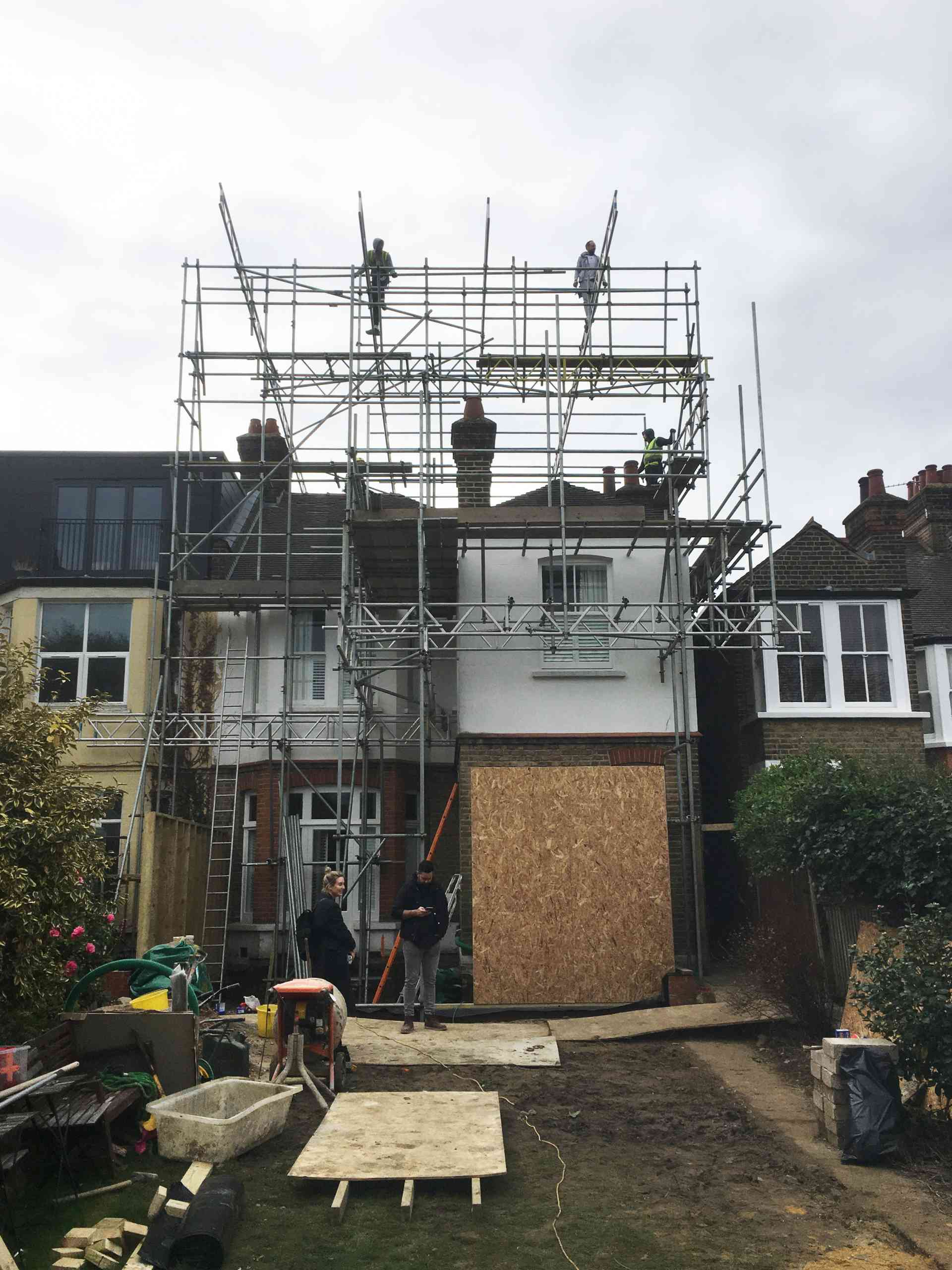There’s much in the press about reaching ‘net-zero’ and the role the construction industry has to play in that. Something that is less often in focus is ’embodied carbon’.
James Hampton from New Makers Bureau in London shares his expertise on the subject below. See James’ full profile on Design for Me and shortlist him for your home extension, renovation or new build project.
What is embodied carbon?
Embodied carbon is the inherent environmental impact of building materials in construction (including the energy used to extract, produce and transport materials).
How important is embodied carbon?
The amount of embodied carbon in any building will vary from project to project and is usually somewhere between 30%-40% of a building’s whole life carbon. For a typical house in the UK, it is between 50-80 tonnes of CO2 – that’s equal to about 50 return flights to New York or an average UK person’s emissions for 14 years.
The UK government has made a commitment to decarbonise the UK’s power supply by 2035. This means that as a percentage of a building’s emissions, embodied carbon will soon become the majority.
Reducing embodied carbon in architectural design
Our architecture practice focuses on making low embodied carbon buildings, whilst not compromising on excellent design quality. We work on both new builds and renovations. We are always looking for ways to:
- reduce the amount of material we use
- use reclaimed and recycled materials
- use materials that are either low in embodied carbon or store carbon (are carbon positive).
As signatories of both Architects Declare (a leading group of architecture practices committed to reducing the environmental impacts of our buildings) and the LETI (London Energy Transformation Initiative) we believe that we have a responsibility to significantly reduce the environmental impacts of making buildings. We don’t believe that this care for the environment should impact the architecture – for us it’s about doing more with less; better design that’s better for the planet.
Low embodied carbon extension & renovation project

Downton Avenue
One project where we’re currently putting our ideas into practice is Downton Avenue in London. The client found us through Design for Me, to extend and renovate their large Edwardian home.
Traditionally such an extension would be built with a concrete slab and foundations for the ground floor, blockwork walls and a facing brick, with foam insulation and some structural steelwork.
Concrete and brick, although very durable and long-lasting, are high in embodied carbon (229kg CO2 eq/m3 and 565kg CO2 eq/m3 respectively). Even materials like foam insulation can have a large carbon footprint as there is a lot used (123.3kg CO2 eq/m3). So the first thing we consider when designing is how can we reduce these more intensive items.
Low embodied carbon wall construction
In this project we’re using timber panels (known as SIPs) for the wall construction with recycled wood fibre insulation between – both of these materials (and all timbers) store carbon and are therefore either low or carbon positive, provided that the timber is sustainably sourced.
Low embodied carbon floor construction
We haven’t yet figured out a way to avoid using concrete in foundations (although we’re working on it and have a project outside of the UK using stone foundations). However, we have found ways to reduce the amount of concrete used. At Downton Avenue we have used a timber floor which sits above a ground cavity with some blinding beneath. This has saved about 2.7m3 of concrete in total or 618kg CO2 eq.
Low embodied carbon facade
A building’s facade is often the highest source of its embodied carbon, at Downton we’ve wrapped the timber frame in textured reclaimed brick with portland stone details. Using reclaimed bricks can reduce the carbon significantly (to circa. 4.9kg CO2 eq/m3) because the carbon in the bricks has already been spent – when a material is re-used we’re also saving it from landfill. It takes more time and effort to source reclaimed bricks and they can be more expensive – but we find that it’s often a price our clients feel is worth paying. Finding the right brick can make all the difference and knowing the inherent history of a material can also have a positive effect on how it feels.
The project also improves the energy performance of the home – with better insulation, higher performing glazing, an underfloor heating system and a more air tight frame we are preventing energy waste and improving efficiency. We also have a green roof which attracts insects and helps to mediate rainwater runoff.
It’s not just the environment that benefits – there are other plus points too: the timber frame construction is faster than blockwork and involves less wet trades; the facade has a visual richness that would be hard to achieve with new bricks; and there’s a simple joy in knowing that we’ve managed to make more with less.
James Hampton New Makers Bureau

